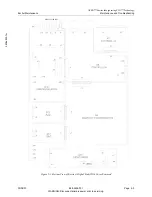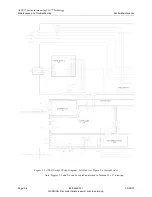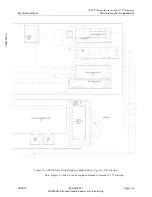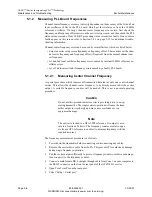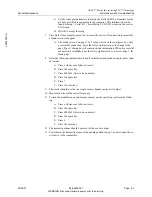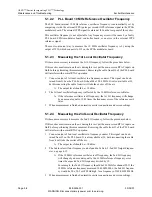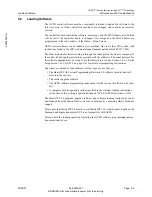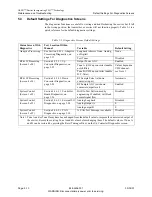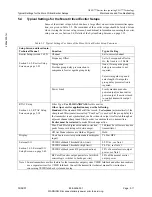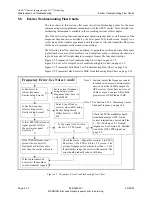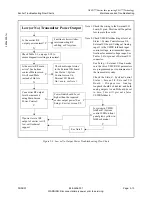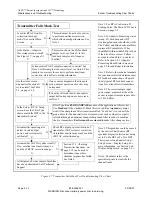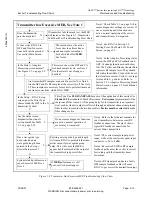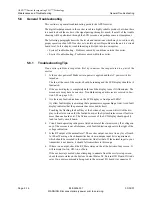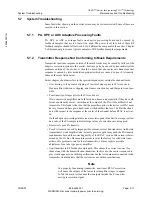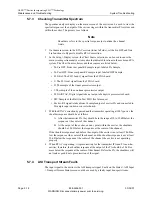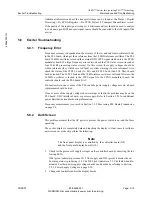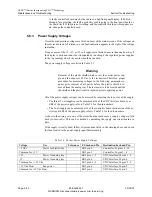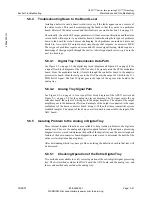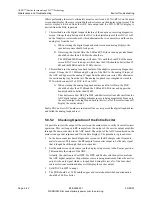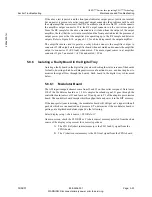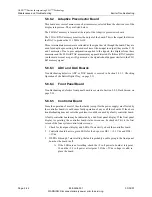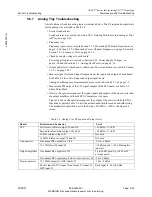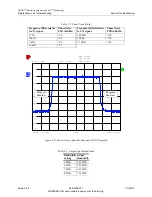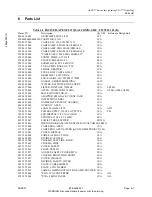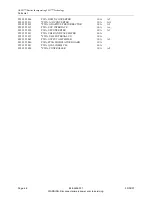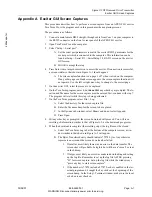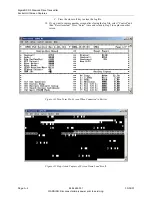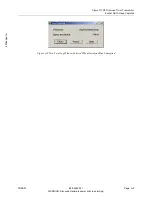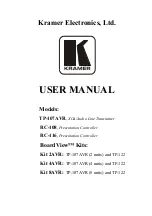
APEX
™
Exciter Incorporating FLO
™
Technology
System Troubleshooting
Maintenance and Troubleshooting
26
04s50
0.fm
03/08/07
888-2604-001
Page: 5-17
WARNING: Disconnect primary power prior to servicing.
5.7
System Troubleshooting
Some faults that show up on the exciter screen may be systems related. Some of these are
covered in this section.
5.7.1
PA, HPF, or ADC Adaptive Processing Faults
PA, HPF, or ADC over range faults on adaptive processing board can be caused by
feedback samples that are too low or too high. The power level for each of these RF
feedback samples should fall between -30 to 0 dBm at the rear panel of the exciter. Chapter
2 of this manual gives some typical examples of RF feedback sample arrangements.
5.7.2
Transmitter Response Not Conforming to Mask Requirements
Transmitter spectrum response outside of the mask limits may be caused by failure of the
adaptive correction system in the exciter, but it may also be caused by transmitter system
problems outside of the exciter. It should be noted that poor adjacent channel spectral
response is caused by inter modulation products which are caused by poor PA linearity.
Some of these are listed below.
In this chapter, shoulders refers to the spectral response just outside the channel limits.
• Over driving, to the point of clipping, of low level stages prior to IPA (or driver).
If an amplifier is driven to clipping, non linear correction beyond that point is not pos-
sible.
• Poor linearity of stages prior to the PA (or driver).
If two successive amplifiers are both fairly non linear, and especially if they have dif-
ferent non linearity curves, correction at the output of the PA will be difficult if not
impossible. This leads to the idea that the amplifiers prior to the driver (or IPA) must
be very linear and have good head room, with shoulders that are -38 dB at the shoul-
ders with respect to the response at the center of the channel before RTAC is activat-
ed.
On the adaptive processing status screen, excessive peak (blue bar) to average (yellow
bar) ratio of the PA sample indicates large values of corrections are being used.
• Excessively poor PA linearity.
• Poor PA linearity caused by improper idle current, several bad transistors (solid state
transmitters), weak amplifier tube, or faulty power supplies may push the PA linearity
requirements beyond the correcting ability of the RTAC system. Idle current is deter-
mined by the PA bias. Because idle current is set at the factory for solid state trans-
mitters, this problem is rare for these transmitters, but may require periodic
adjustment for a tube type power amplifier.
• Non-linearities in RF feedback sample path. This causes the exciter to correct for
them along with the transmitter non-linearities. In this case, the exciter response dis-
play would appear to be within specifications but the test equipment connected to the
transmitter would indicate that the system was not within specifications.
Note
In a properly functioning transmitter, non-linear RTAC correction
will cause the outputs of the lower level amplifier stages to appear
to fail the mask test because their outputs include the PA non-lin-
earity precorrection signal.

